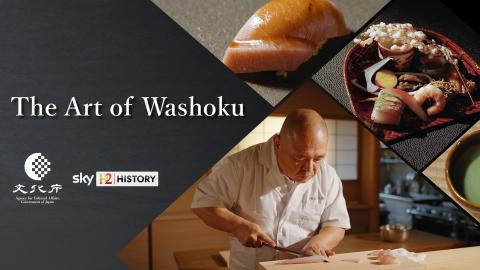Narezushi: The Japanese fermented fish dish with surprising Imperial origins
Think ‘sushi’ and what comes to mind? Perhaps a colourful array of salmon and tuna nigiri, gleaming and jewel-like, ready to be dipped very quickly into some soy sauce (fish side down, of course). Or maybe some dainty little maki rolls, the rice bound in nori seaweed, with refreshing slivers of cucumber at the heart of each morsel. Sushi is undoubtedly one of the iconic dishes of the world, serving as a kind of shorthand for the whole of Japanese cuisine.
Yet, the truth is that sushi as we know it now is a very far cry from the original dish that evolved so many centuries ago in Japan. That ancestor, which uses fermented fish rather than fresh fish, is called narezushi that is eaten with malted rice, and it’s still enjoyed in various forms by bold foodies and staunch traditionalists today. It’s thought that its earliest form arose as a way to preserve fish caught in the paddy fields of southeast China, with the custom migrating to Japan by the 8th Century AD.
This was the same century in which the city now called Kyoto became the capital of Japan. Here, the rulers received culinary tributes from miketsukuni, which were communities known for the excellence of their produce. One such miketsukuni was the nearest seaside north of Kyoto, Wakasa Obama. This coastal city was once renowned as a supplier of seafood to the Imperial Court, with intrepid traders carrying baskets of fish across mountainous trails to Kyoto – a network of routes that became known as the Saba Kaido, or Mackerel Highway.
The abundant mackerel of Obama City, cherished by Kyoto’s aristocratic elite, became a key component of the local version of narezushi, known as saba narezushi. The process, which has been handed down across the generations, begins with the mackerel being gutted and carefully cleaned in freshwater. After being thoroughly rinsed, the fish is then stuffed with salt, packed into barrels, and compressed down by a stone weight. It’s left to ferment for around a week, before the fish is layered with rice bran (a by-product of the rice milling process) and stashed away again, for at least a year.
This fish, referred to as heshiko, turns a deep mahogany-brown colour as it matures during the lacto-fermentation process. Once it’s ready, the umami-rich flesh is often grilled over charcoal before being served with sake. Alternatively, it can be turned into traditional narezushi by being washed with fresh water and stuffed with a mixture of rice and koji rice (whose grains have been inoculated with a kind of mold that triggers fermentation). The mackerel is then returned to the densely filled barrels to pickle for another few weeks.
The result is a thick, tangy, sour concoction, the long-fermented meat of the fish partly robed in a white, yoghurt-like sauce. It’s a real taste of the historic Wakasa province, where Obama City sits, but is undeniably a lot more challenging than the kind of sushi you might tuck into during your lunch break.
It’s worth noting that other kinds of narezushi form part of the culinary repertoire of neighbouring areas. Obama City is just a short drive from Shiga Prefecture, where narezushi is traditionally made with nigorobuna, a kind of wild goldfish found only in Lake Biwa (Japan’s largest lake). This type of narezushi is properly called funazushi and is prepared in a very similar way to the mackerel-based narezushi of Obama City, developing a rich, salty-sour taste akin to aged cheese.
There are other delicacies that await culinary adventurers in Kyoto, Obama City and nearby communities. A classic mackerel creation is sabazushi, which is far more recognisably ‘sushi-like' than narezushi. It consists of mackerel that has been salted and pickled in vinegar, before having its outer skin painstakingly peeled away and its bones removed. The impeccably prepared fillet is then pressed onto sushi rice, along with a thin slice of pickled kelp.
Another much-loved local dish is yopparai saba, or ‘drunk mackerel’. While still swimming about in Wakasa waters, the fish are fed a by-product of sake production called lees. This tones down the fishy flavour of the mackerel and dials up the umami, with the fish either simply grilled or served as sashimi.
Meanwhile, a mackerel-free signature of Obama is kodai no sasazuke, which puts sea bream centre stage. The bream, caught in the Sea of Japan, is filleted, sliced, and pickled in salt and vinegar. It’s served in small, traditional wooden casks which can be cracked open to get at the succulent, sour flesh.
Ultimately, however, it’s the narezushi of Obama and surrounding towns and cities that perhaps holds the greatest historic fascination for food buffs who travel to Japan. What was developed out of necessity, to keep fish edible for as long as possible for the Imperial Court in a time before refrigeration, paved the way for a type of cuisine now loved by millions across the globe.
















